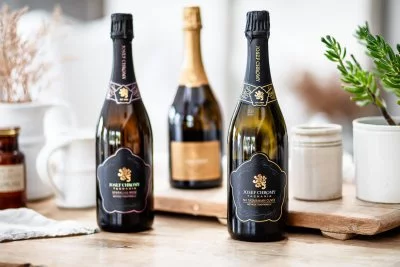Bodegas para visitar Tasmania
Aquí tienes una lista de las mejores bodegas para visitar en Tasmania. ¡Puedes reservar online tu visita a las bodegas en Tasmania en Winedering.com, eligiendo las bodegas marcadas con el distintivo "RESERVA ONLINE"!
¡Reservar en línea una visita a una bodega en Tasmania es rápido, fácil y seguro en Winedering.com!
Destinos populares en Tasmania
Josef Chromy Wines
(Bodega en Tasmania)
Moorilla
(Bodega en Tasmania)
Domaine A Stoney Vineyard
(Bodega en Tasmania)
Barringwood Estate & Tuckshop at Barringwood
(Bodega en Tasmania)
Bruny Island Premium Wines
(Bodega en Tasmania)
Frogmore Creek Winery
(Bodega en Tasmania)
Holm Oak Vineyards
(Bodega en Tasmania)
Pooley Wines PTY Ltd.
(Bodega en Tasmania)
Goaty Hill Wines
(Bodega en Tasmania)
Ghost Rock Vineyard
(Bodega en Tasmania)
Cape Bernier Vineyard
(Bodega en Tasmania)
Priory Ridge Wines
(Bodega en Tasmania)
Stefano Lubiana Wines Pty Ltd.
(Bodega en Tasmania)
Glaetzer-Dixon Family Winemakers
(Bodega en Tasmania)
Grey Sands Vineyard
(Bodega en Tasmania)
Gryphonwood Vineyards
(Bodega en Tasmania)
Más información sobre Tasmania
¿Qué bodegas visitar en Tasmania?
Éstas son las mejores bodegas para visitar en Tasmania:
- Josef Chromy Wines
- Moorilla
- Holm Oak Vineyards
- Barringwood Estate & Tuckshop at Barringwood
- Priory Ridge Wines
- Cape Bernier Vineyard
- Pooley Wines PTY Ltd.
- Ghost Rock Vineyard
¿Dónde hacer catas de vino en Tasmania?
Éstas son las mejores catas de vinos que puedes reservar en Tasmania:
- Vamos a comer a Josef Chromy Wines en el valle del Tamar
- Detrás de la etiqueta de Josef Chromy Wines, en el valle del Tamar
- Wine & Art Experience en Moorilla
- Pasa un Día de Posh-as en Moorilla y su Museo de la Mona
- The Art of Sparkling Experience en Josef Chromy Wines, en el Valle de Tamar
- Yoga en los viñedos de Josef Chromy Wines, en el valle del Tamar
- Experiencia de degustación decantada en Moorilla


